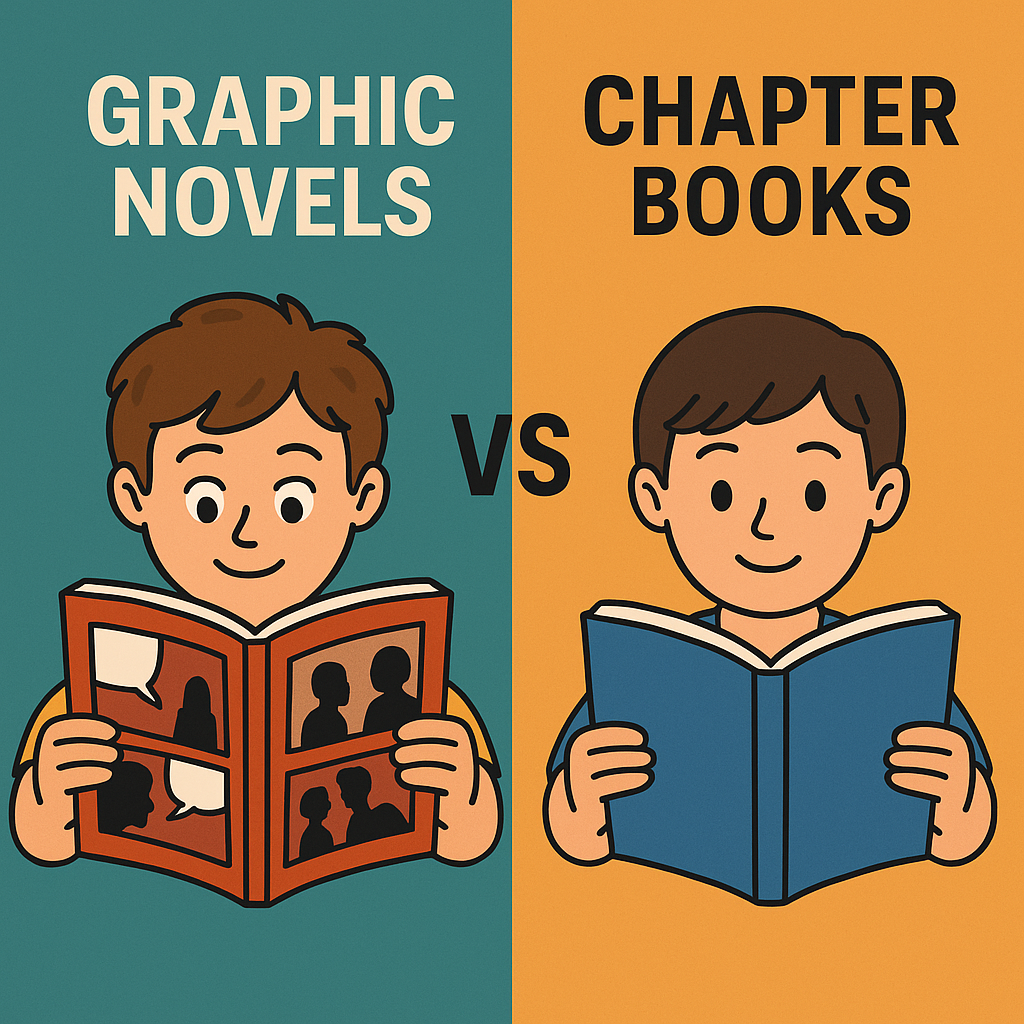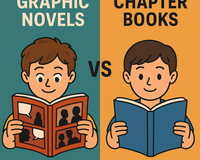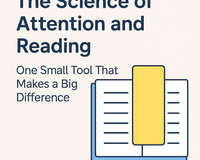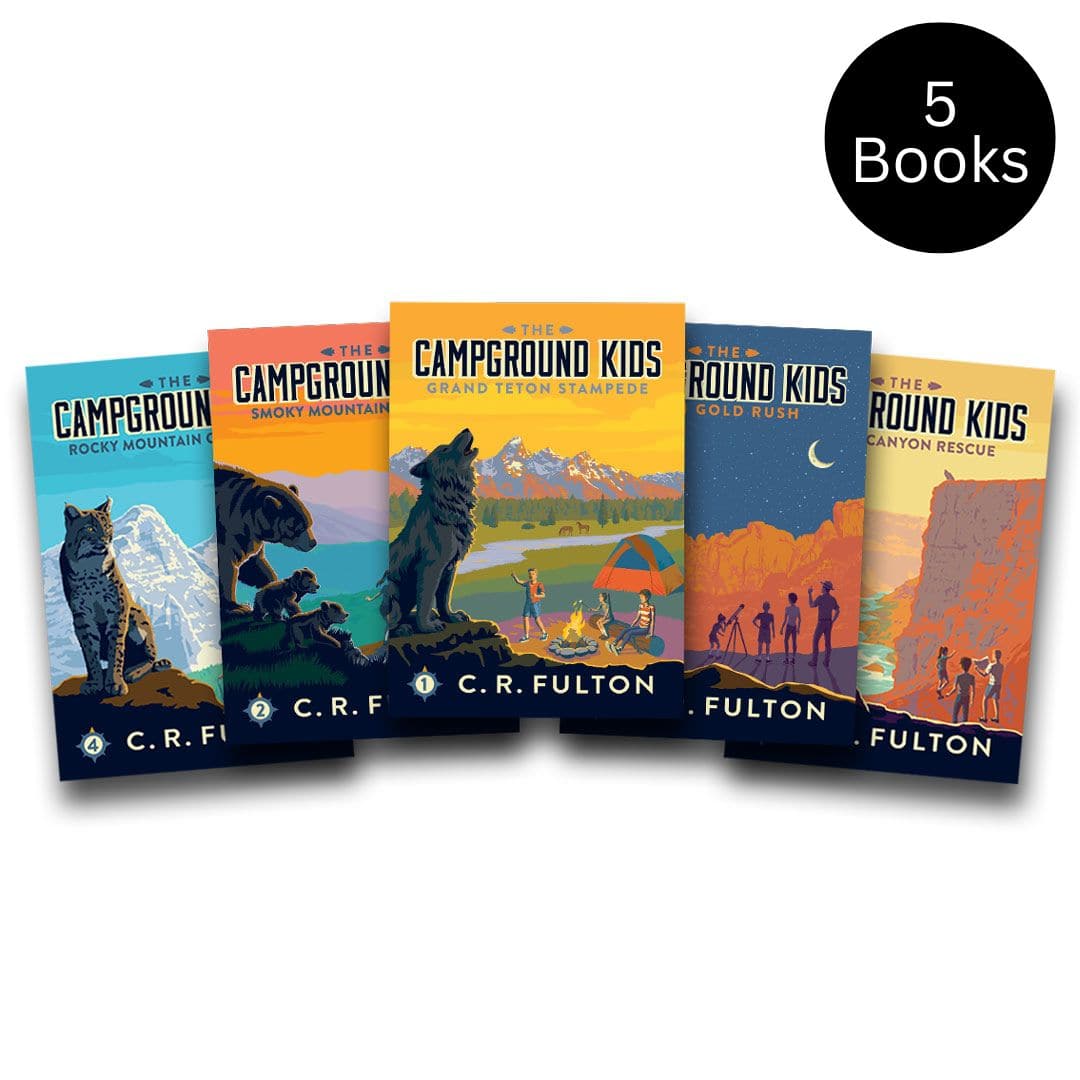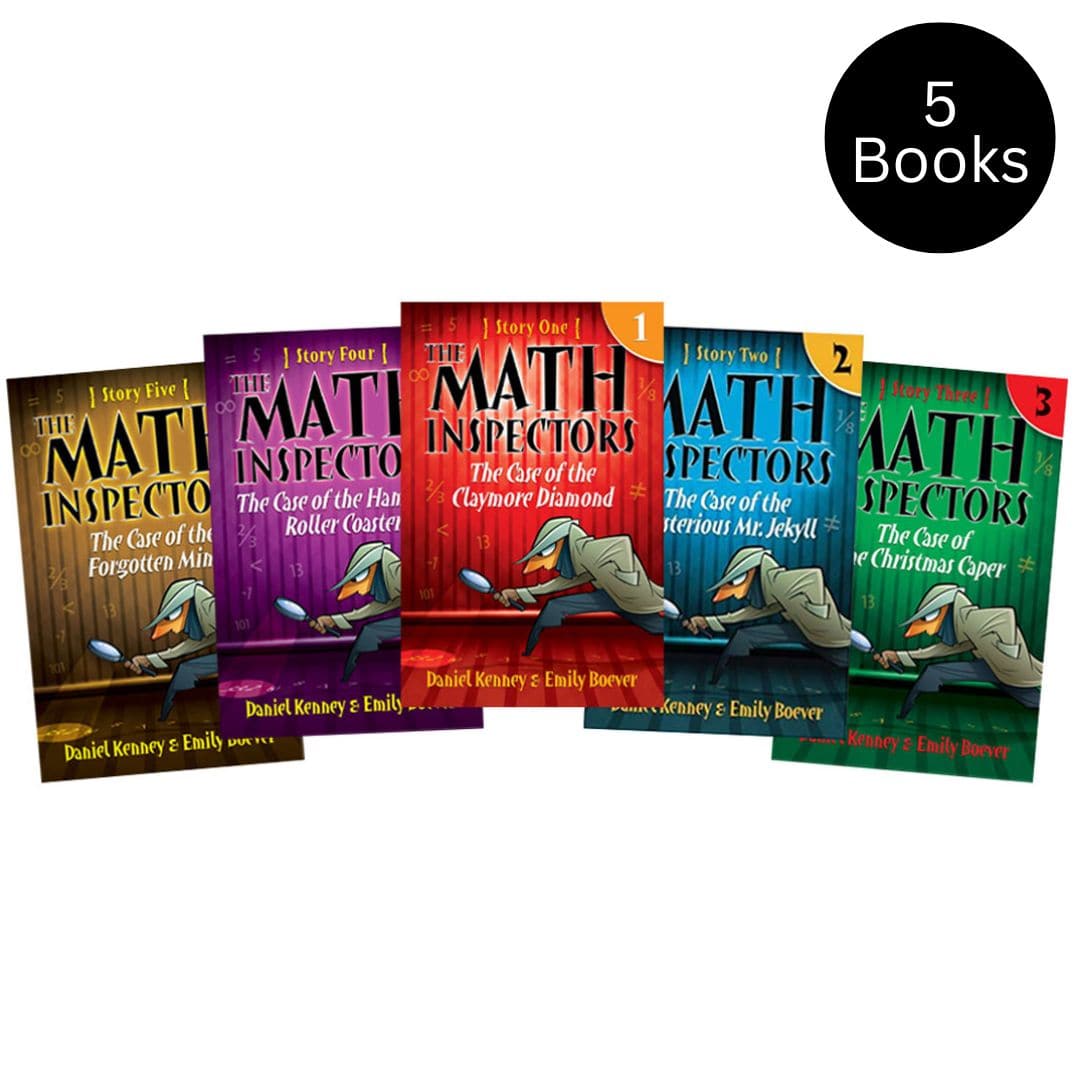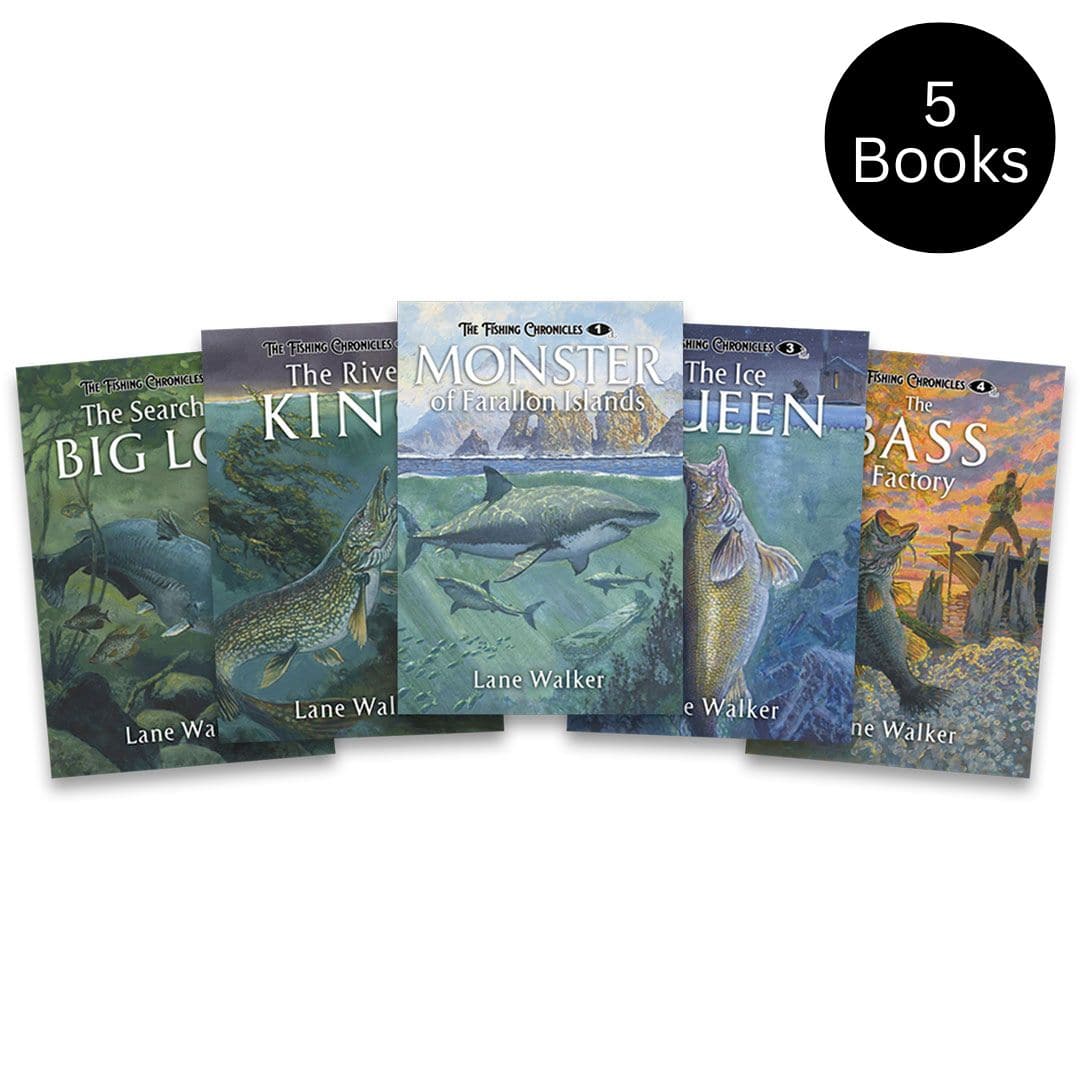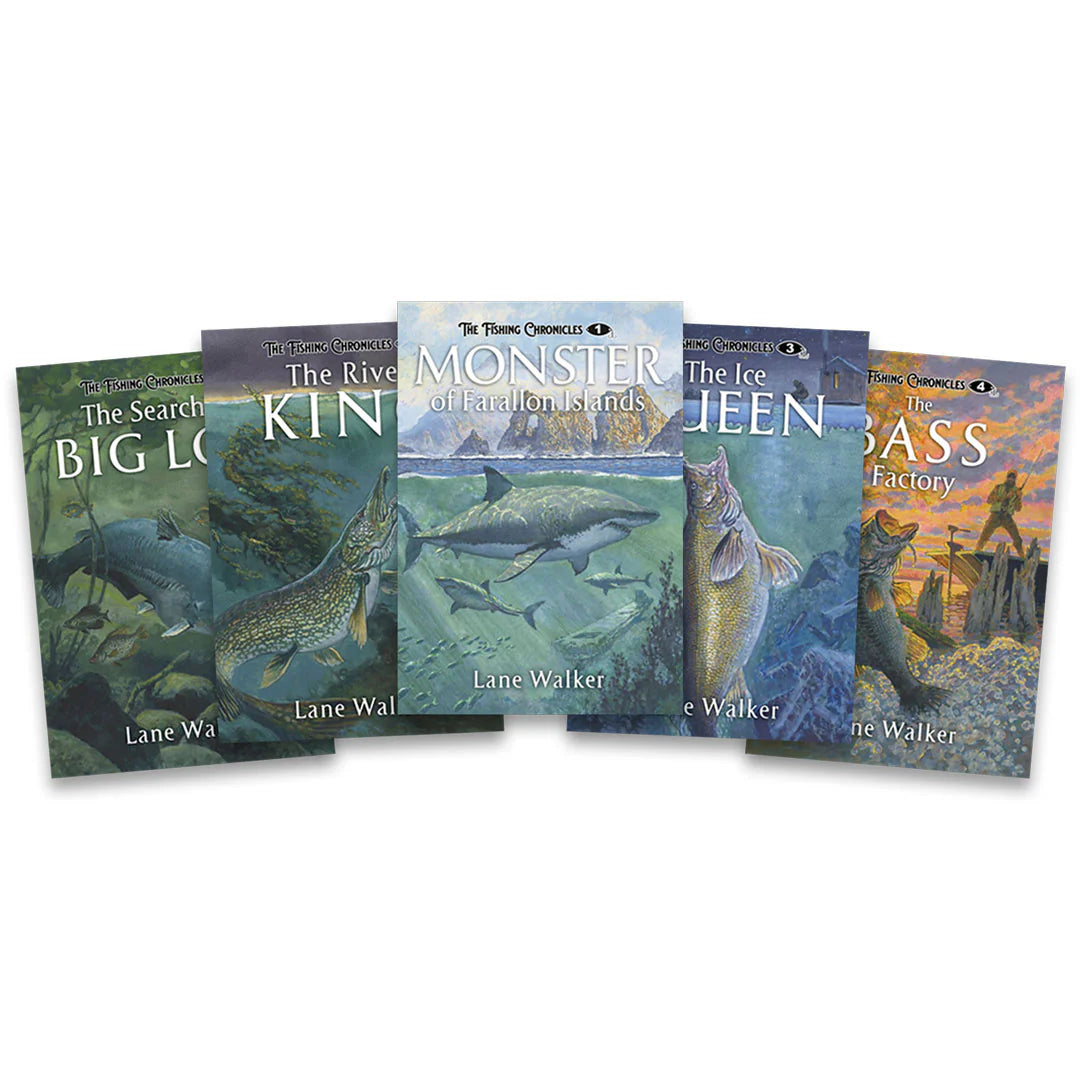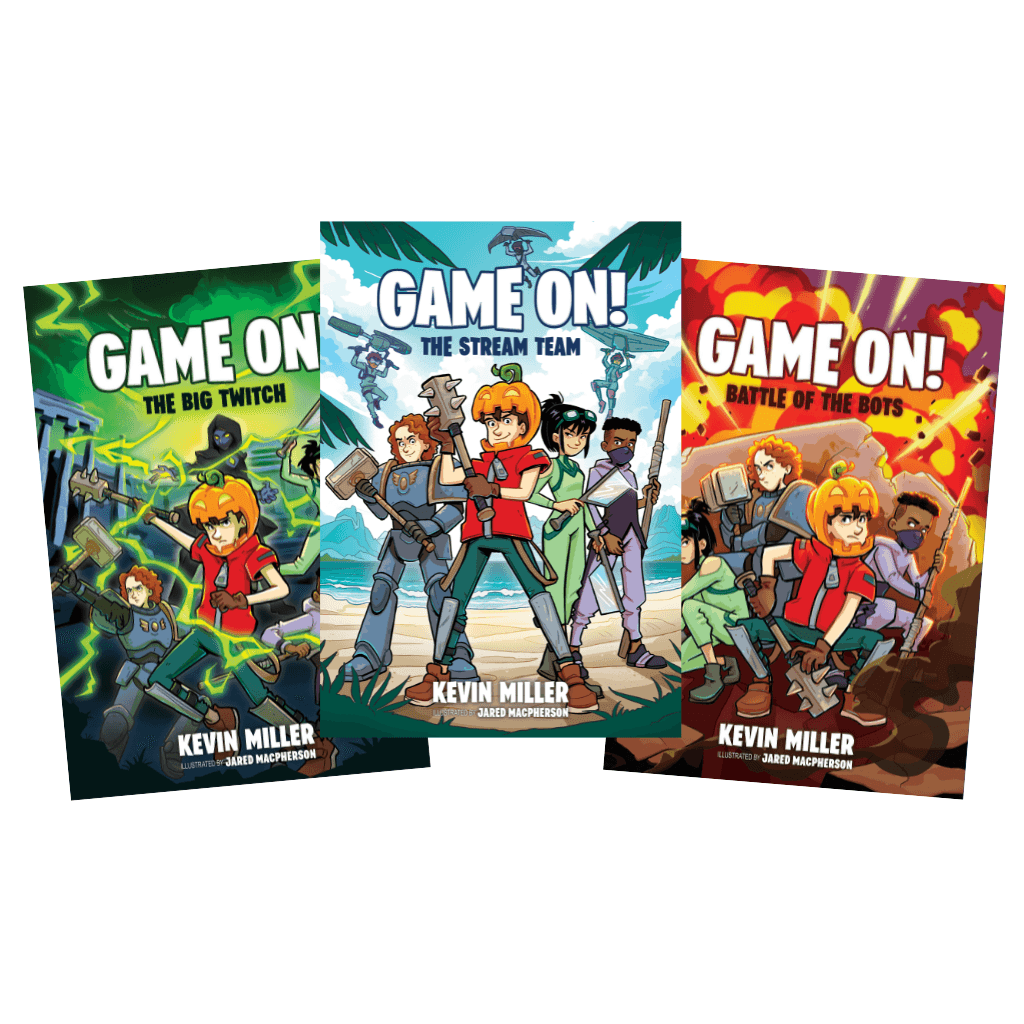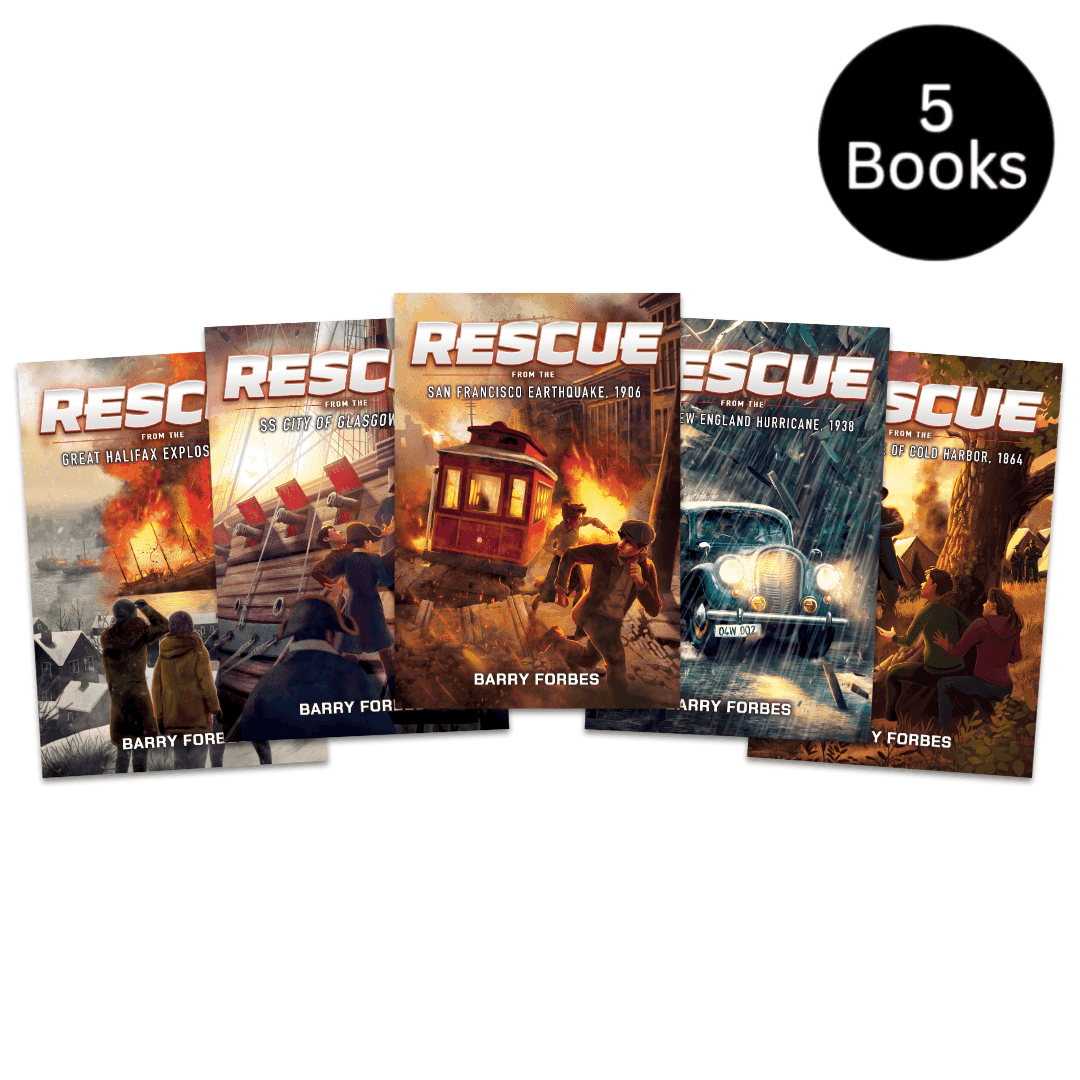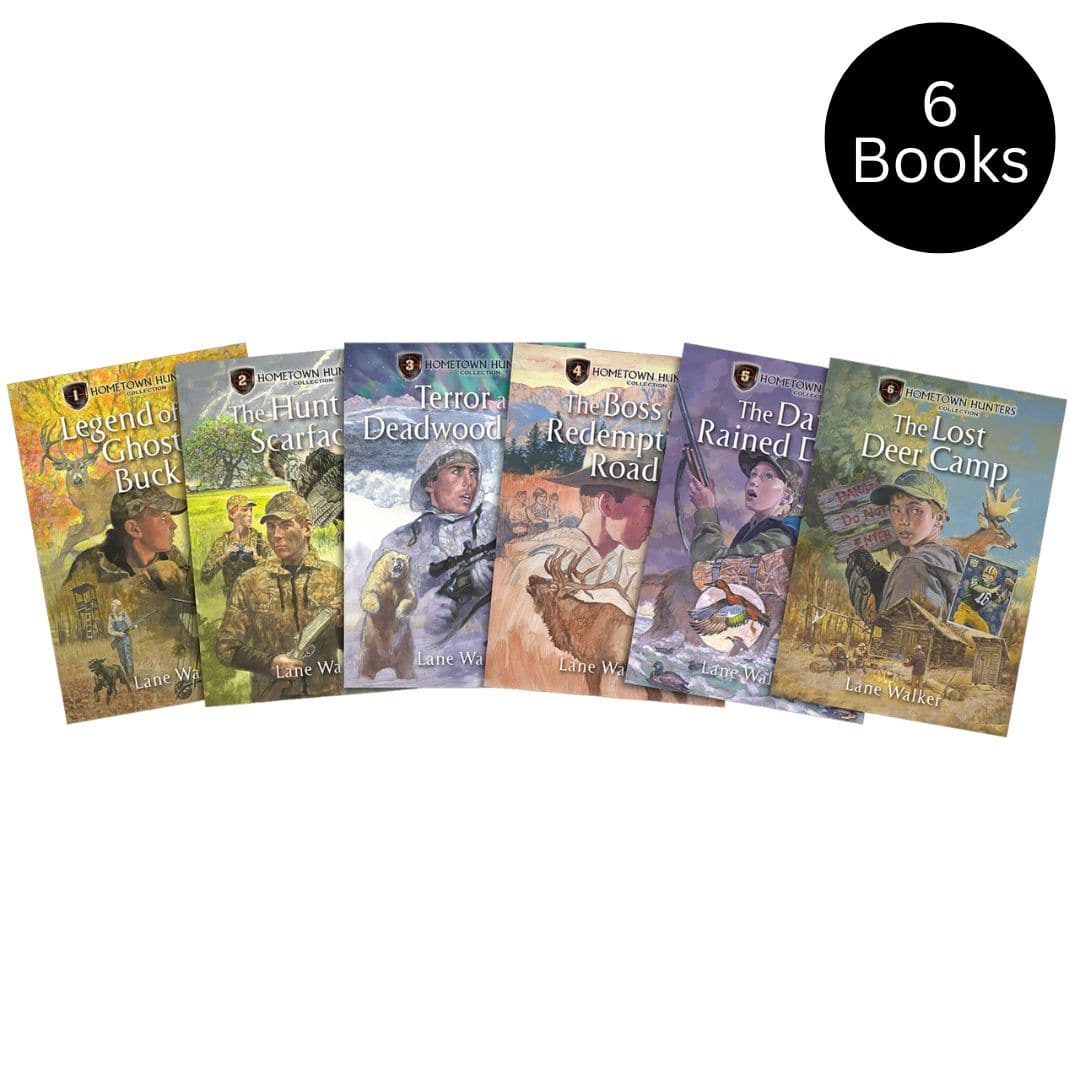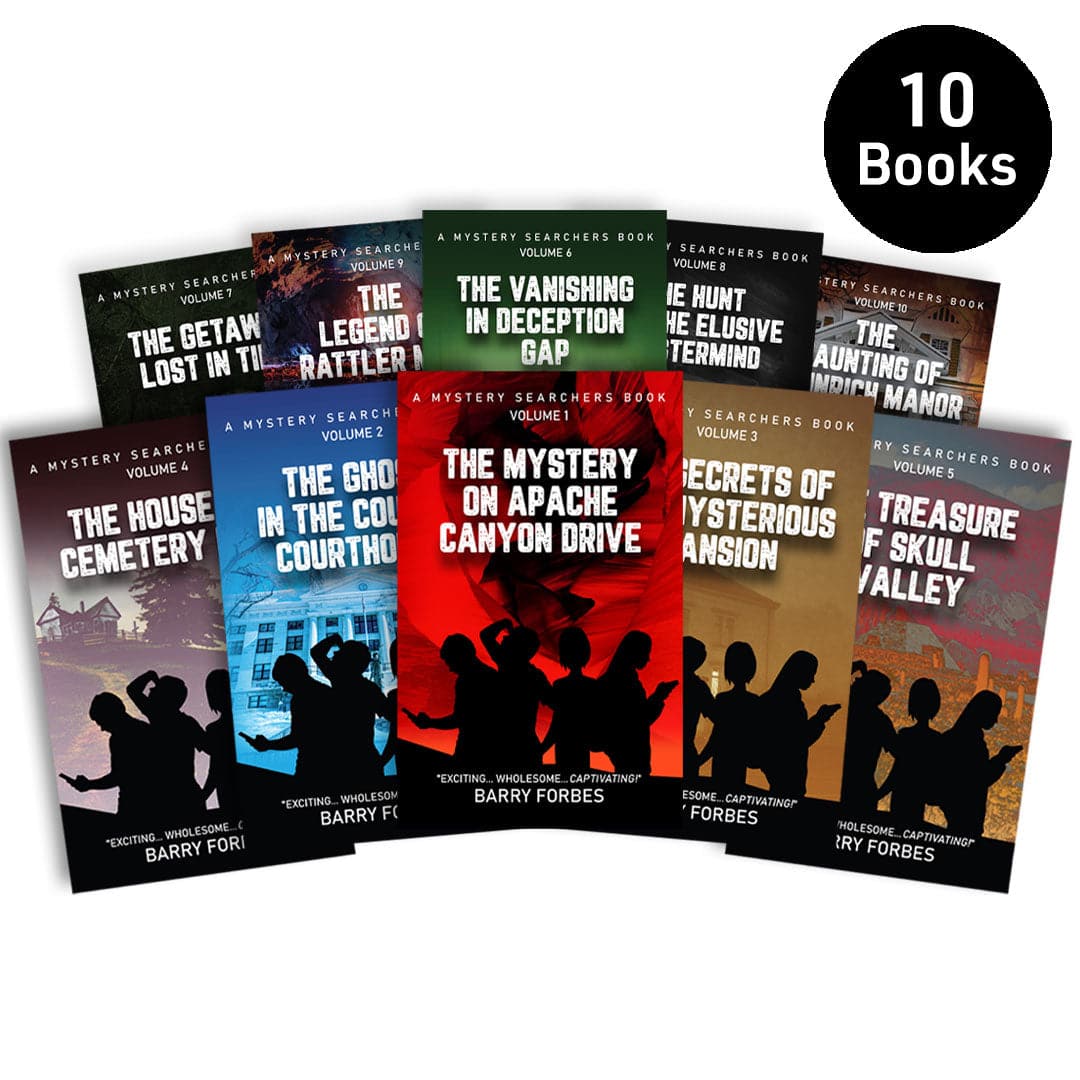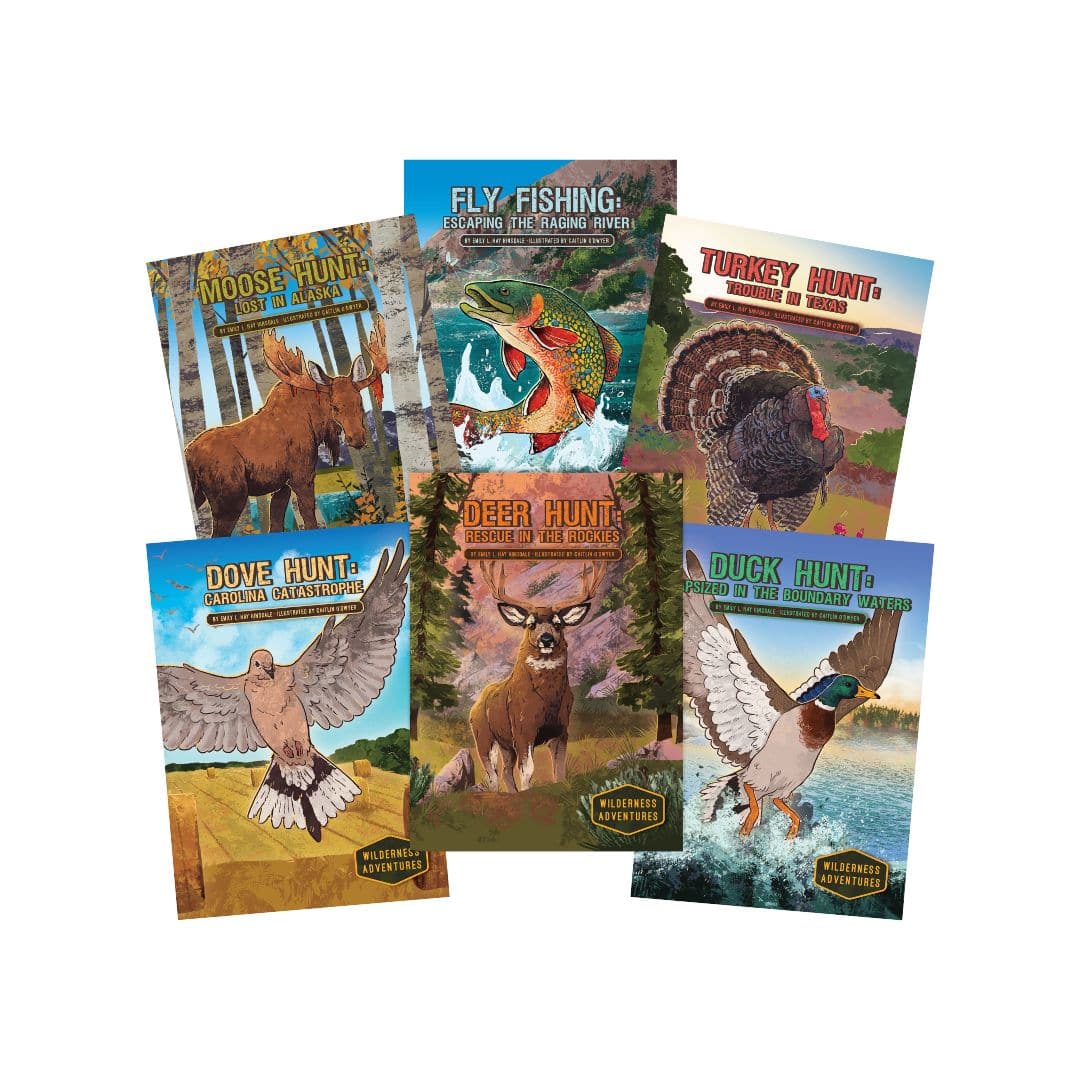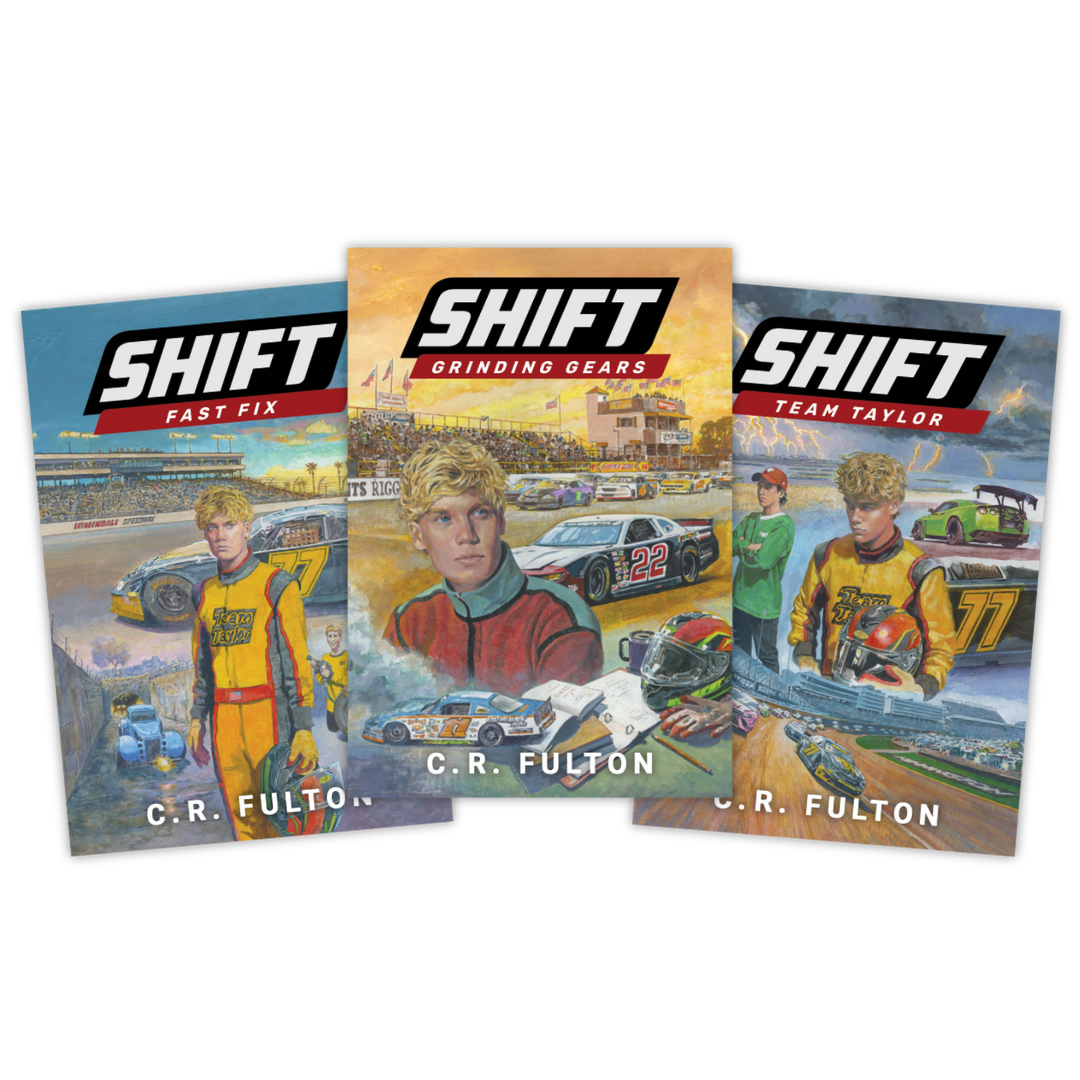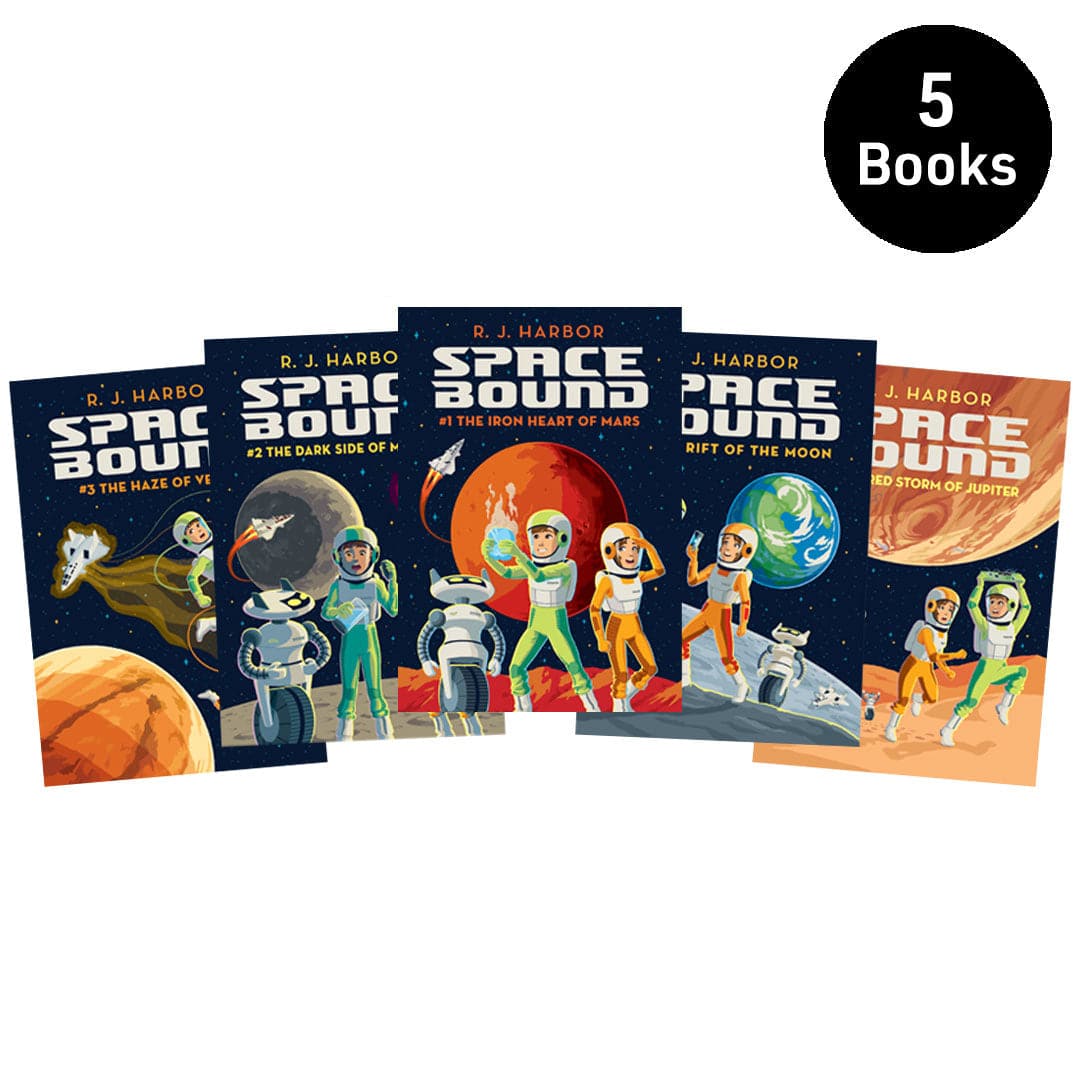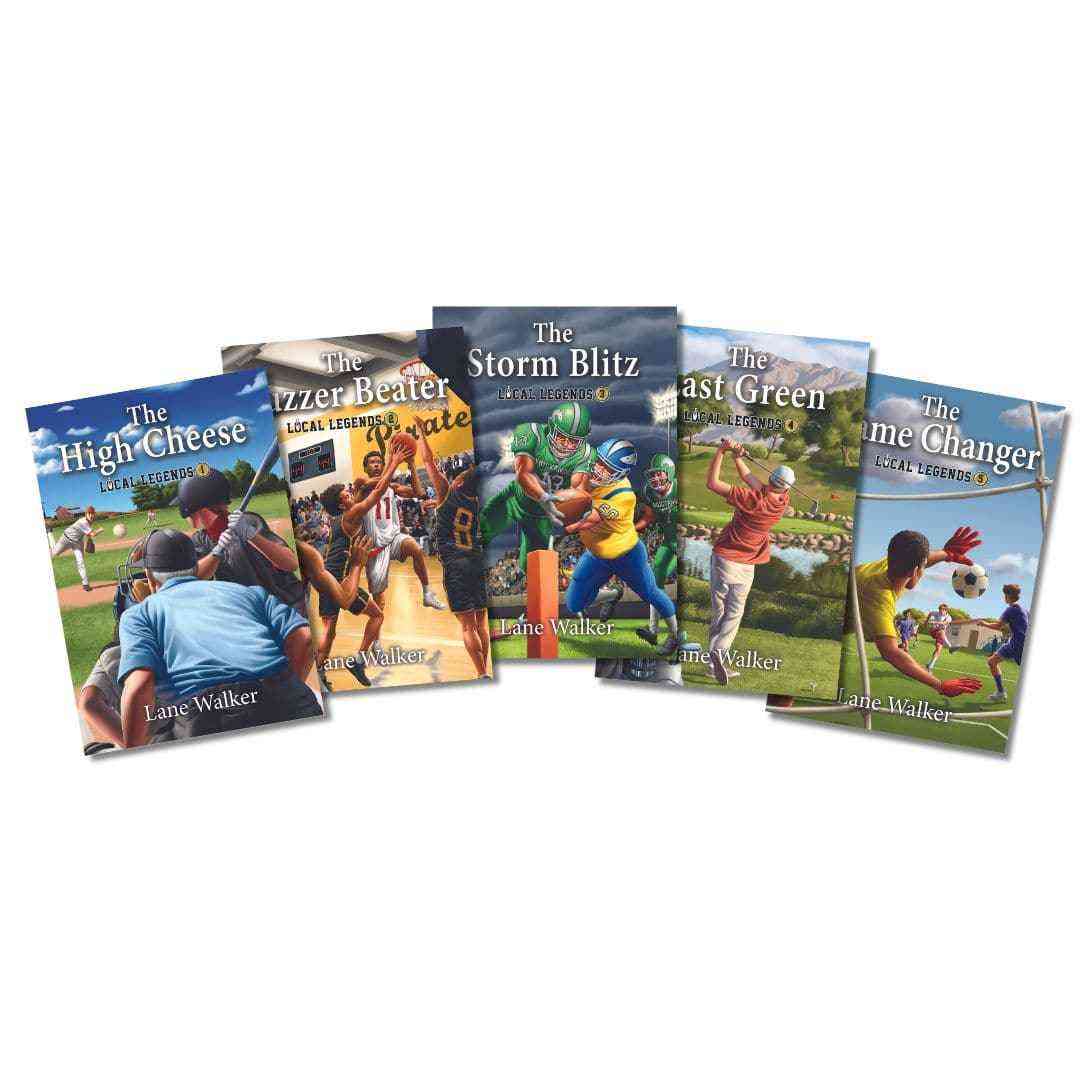Graphic Novels Vs Chapter Books: Pros and Cons
When it comes to children’s literature, graphic novels and traditional chapter books each offer unique experiences for readers. Both formats have their strengths and drawbacks, and understanding the differences can help parents, educators, and young readers choose the right fit at the right time.
What is a Graphic Novel?
A graphic novel is a long-form work of fiction that uses images, illustrations, and text together to tell a story. Unlike traditional novels, graphic novels rely heavily on visuals to set the mood, advance the plot, and develop characters. Panels, speech bubbles, and color bring the story to life in ways that words alone cannot.
What is a Traditional Chapter Book?
A prose chapter book is written in standard sentences and paragraphs, divided into chapters for pacing and structure. These books are usually text-heavy and range from about 30,000- 50,000 words for children’s literature. Readers must rely on descriptive language and their imagination to visualize the story’s characters, settings, and events.
Key Differences:
| Aspect | Kids Graphic Novels | Traditional Chapter Books |
|---|---|---|
| Mood | Conveyed visually through images, colors, and illustrations | Conveyed through descriptive language and literary style |
| Storytelling | Story is shown with illustrations and visual context | Story is created entirely with words, dialogue, and narrative |
| Plot & Scenes | Multiple plots, scenes, and conversations can occur on a single page | Typically focuses on one scene or setting at a time |
| Imagination | Minimal imagination required- visuals provide most details | Heavy reliance on imagination- readers visualize characters, settings, and action |
| Word Use | Uses fewer words; images carry much of the storytelling | Relies fully on text for plot, world-building, and character descriptions |
| Reading Experience | Faster-paced, visually driven | Slower, immersive, and language-driven |
Pros of Graphic Novels
- Develop Visual Literacy: Readers learn to interpret body language, expressions, and visual cues quickly, strengthening comprehension skills.
- Aid in Comprehension and Vocabulary: Despite fewer words, graphic novels still require analysis, cause-and-effect understanding, and the decoding of descriptive vocabulary paired with illustrations.
-
Engage Reluctant Readers: Their fast pace and visual appeal often capture the attention of struggling or hesitant readers, making reading feel more approachable and enjoyable.
Cons of Graphic Novels
- Overloaded Scenes: Multiple settings and characters can appear on a single page, which may overwhelm readers with attention or focus challenges.
- Reading Codes: Understanding speech bubble styles, narrator cues, or flashback colors requires effort and may frustrate beginners.
-
Less Imagination: Because the story is already fully illustrated, readers engage less in imaginative world-building and personal interpretation.
Pros of Traditional Chapter Books
- Language Development: Rich, descriptive prose expands vocabulary, comprehension, and imagination. Readers mentally create worlds, characters, and settings, deepening their engagement.
- Complex Narratives: Longer word counts allow for more character development, layered plots, and nuanced storytelling.
-
Educational Value: Chapter books are often viewed as the “gold standard” in schools and are essential for academic growth, preparing students for advanced reading and learning.
Cons of Traditional Chapter Books
- Accessibility Challenges: Dense text and advanced vocabulary can intimidate reluctant readers, especially those transitioning from picture books.
- Slower Engagement: Unlike graphic novels, chapter books often take longer to immerse readers in the story, which can frustrate impatient learners or reader who struggle with short attention spans.
- Limited Immediate Diversity: Without visuals, representation relies on readers’ prior knowledge. If a child has never seen a specific topic, correlating descriptions alone may feel confusing or incomplete.
Final Thoughts
Both graphic novels and traditional chapter books bring valuable experiences to readers. Graphic novels excel at accessibility, visual engagement, and quick comprehension, while chapter books may foster more imagination, deeper narratives, and the hopes of academic growth. The best approach isn’t to choose one over the other but to embrace both formats. Together, they can inspire a lifelong love of reading and help children grow into well-rounded, confident readers.
Graphic Novels Recommendations: 
1. Dog Man (Series) by Dav Pilkey
From the creator of Captain Underpants, this series follows a part-dog, part-man police officer on wacky adventures. Full of humor, action, and playful art styles — especially great for reluctant readers.
2. Hilo (Series) by Judd Winick
A bright, funny sci-fi adventure about a boy who falls from the sky and discovers he’s more than he seems. Perfect for fans of action, friendship, and robots.
3. Magic Tree House Graphic Novel Mary Pope Osborne, adapted by Jenny Laird
Based on the beloved chapter book series, this graphic novel adaptation follows siblings Jack and Annie as they travel through time on thrilling adventures. With vibrant illustrations and fast-paced storytelling, it brings history, fantasy, and imagination to life — perfect for young readers who love exploration and discovery.
4. Zita the Spacegirl (Series) by Ben Hatke
A fast-paced adventure with humor, aliens, and robots, following Zita as she journeys through space to save her friend. Great for fans of imaginative settings and strong heroines.
5. Narwhal and Jelly (Series) by Ben Clanton
A sweet, silly, and beginner-friendly series about a cheerful narwhal and his jellyfish friend. Simple panels, light humor, and charm make it ideal for younger elementary readers.
Chapter Book Recommendations

1. Diary of a Wimpy Kid by Jeff Kinney
A hilarious, illustrated chapter book series that follows middle schooler Greg Heffley through awkward, funny, and relatable adventures. Perfect for kids who love humor and realistic school-life stories.
2. Percy Jackson & the Olympians by Rick Riordan
An action-packed fantasy series that blends Greek mythology with modern life. Percy Jackson discovers he’s a demigod and sets off on quests full of gods, monsters, and epic battles. Ideal for kids who love adventure and mythology.
3. The Campground Kids by C.R. Fulton
A wholesome, adventurous series where friends explore campgrounds, uncover mysteries, and solve problems together. Great for kids who enjoy nature, teamwork, and exciting but family-friendly adventures.
4. The Math Inspectors by Daniel Kenney
A mystery series with a twist — four friends use math and logic to solve crimes in their town. Entertaining and educational, this is a great choice for kids who love puzzles and problem-solving.
5. The Boxcar Children by Gertrude Chandler Warner
A classic series about four orphaned siblings who create a home in an abandoned boxcar and go on to solve gentle mysteries together. Timeless, heartwarming, and perfect for younger chapter book readers.
Final Thoughts
Both graphic novels and traditional chapter books bring valuable experiences to readers. Graphic novels excel at accessibility, visual engagement, and quick comprehension, while chapter books foster imagination, deeper narratives, and academic growth. The best approach isn’t to choose one over the other but to embrace both formats. Together, they can inspire a lifelong love of reading and help children grow into well-rounded, confident readers.

